Digital Poster
Pulse Sequences for Neuroimaging
ISMRM & ISMRT Annual Meeting & Exhibition • 10-15 May 2025 • Honolulu, Hawai'i

 |
Computer Number: 17
2747. Ultra-fast
whole-brain 3D-EPI across scales: pushing high-performance
gradients at 7T
R. Stirnberg, H. Mattern, O. Speck, T. Stöcker
German Center for Neurodegenerative Diseases (DZNE), Bonn, Germany
Impact: Utilizing highly-accelerated segmented 3D-EPI
with high-performance head gradients at 7T, ultra-fast
whole-brain fMRI protocols (up to 90ms per volume at 3mm
isotropic) and ultra-high-resolution whole-brain
anatomical/quantitative imaging with negligible motion blur
(350 microns isotropic within 3.5 minutes) become possible.
|
|
 |
Computer Number: 18
2748. Whole-brain
perfusion mapping in mice model for Alzheimer’s disease by
dynamic BOLD MRI with transient hypoxia
M. Seong, G. H. Im, T. Le, J. H. Lee, S. T. Kim
Samsung Medical Center, Seoul, Korea, Republic of
Impact: Dynamic BOLD MRI with transient hypoxia can
demonstrate cerebral perfusion changes before volume
decline, suggesting the potential of this noninvasive
technique as an early biomarker of dementia that may allow
for screening of potential patients for dementia treatment.
|
|
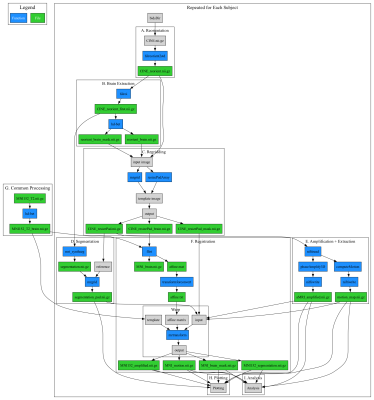 |
Computer Number: 19
2749. An
automated q-aMRI pipeline for scalable brain displacement
analysis: Enhancing speed, consistency, and clinical relevance
E. Clarkson, H. Kumar, J. Wright, I. Terem, E. Kwon, S.
Holdsworth
Mātai Medial Research Institue, Tairāwhiti Gisborne, New Zealand
Impact: Large-scale quantification is essential to
uncover the clinical significance of brain displacement in
disease contexts. This automated q-aMRI pipeline streamlines
the analysis process, enhancing the speed and scalability of
displacement analyses in clinical cohorts.
|
|
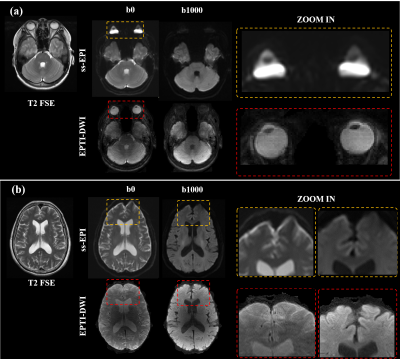 |
Computer Number: 20
2750. High-Resolution
Multi-Contrast Distortion-free DWI for Motion-Sensitive
Patients:Integrating EPTI with Prospective Motion Correction
H. Bai, Z. Zhou, K. Dai, W. Shen, P. Lee, H. Chen, Z. Zhang
Shanghai Jiao Tong University, Shanghai, China
Impact: The
integration of EPTI with PMC enhances DWI's clinical utility
by providing high-resolution(1×1×5 mm3),
distortion-free imaging for motion-sensitive patients,
including children and patients with Alzheimer’s disease.
|
|
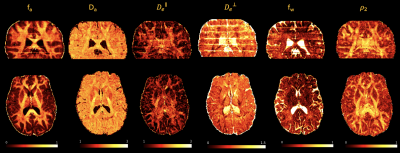 |
Computer Number: 21
2751. 1mm
Isotropic Resolution Whole Brain Microstructure Imaging at high
SNR efficiency using 3D Multi-slab DMRI Demonstrated on the
MAGNUS MRI
C-Y Lee, M. Mani
University of Iowa, Iowa City, United States
Impact: Addressing the long VAT of 3D-msDWI can provide
a new technique to generate high SNR data that supports
advanced microstructure studies.
|
|
 |
Computer Number: 22
2752. Effect
of Gradient Impulse Response Function-based corrections on
High-resolution FID Rosette Spectroscopic Imaging at 7T
A. Saucedo, C. Zhao, S. Mendoza, I. Pappas, D. Wang
University of Southern California, Los Angeles, United States
Impact: GIRF-based corrections for high-resolution FID
MRSI have scarcely been shown in the literature. Accounting
for gradient imperfections using the GIRF is crucial for
non-Cartesian MRSI, particularly for high field and
high-resolution acquisitions that demand high gradient
performance.
|
|
 |
Computer Number: 23
2753. Direct
Encoded Signal Control with Phase Distribution Graphs for
readout-tailored multipulse pTx
S. Weinmüller, J. Endres, P. Dawood, M. Freudensprung, F.
Glang, A. Nagel, M. Zaiss
Universitätsklinikum Erlangen, Erlangen, Germany
Impact: This approach enables more precise RF shimming
for high-field MRI, improving image quality. It opens
avenues for investigating optimized sequences across various
readout strategies, reducing the need for manual tuning,
which can enhance clinical and research imaging
applications.
|
|
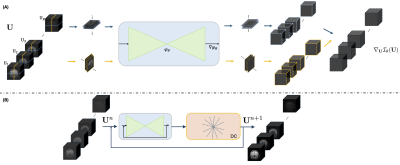 |
Computer Number: 24
2754. Accelerating
Quantitative MRI using Subspace Multiscale Energy Model
(SS-MuSE)
Y. Chen, J. Rikhab Chand, S. Kecskemeti, J. Holmes, M. Jacob
University of Virginia, Charlottesville, United States
Impact: The proposed method enabled fast iterative
reconstruction of the large-scale multi-contrast MRI data
from the accelerated scan. The recovered source images can
be used to differentiate the tissue types or quantitative
mapping.
|
|
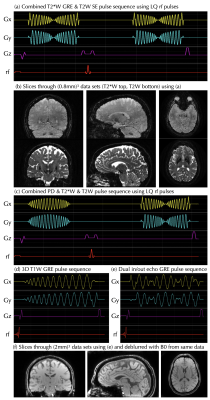 |
Computer Number: 25
2755. Implementation
and expansion of an analytic framework for generating spiral
trajectories
J. Pipe, G. Krishnamoorthy
University of Wisconsin Madison, Madison, United States
Impact: This will help to enable spiral MRI, which may
improve image quality and reduced scan times by 2-6X over
conventional Cartesian methods with no loss in image
quality.
|
|
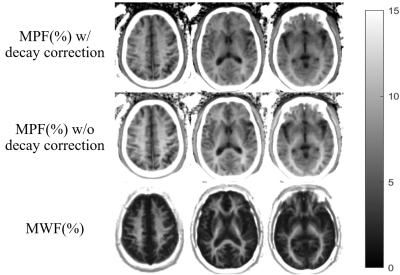 |
Computer Number: 26
2756. Simultaneous
Myelin and Myelin Water Mapping Using Dual-Echo STAIR-Cones
Sequence
J. Lo, J. Wang, D. Tran, J. Athertya, S. H. Shin, J. Du, Y.
Ma
University of California San Diego, La Jolla, United States
Impact: The DE-STAIR-Cones, as a singular sequence, can
measure the myelin imaging biomarkers of MPF and MWF, which
may help in understanding the mechanism of these myelin
imaging biomarkers for the assessment of
neuroinflammatory/neurodegenerative diseases.
|
|
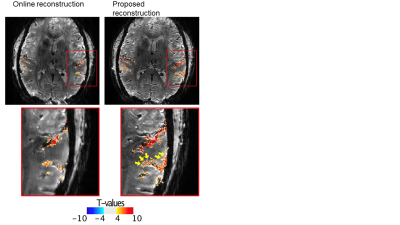 |
Computer Number: 27
2757. Tailored
reconstruction for high-resolution 3D-EPI at high and ultra-high
fields
S. Moeller, E. Yacoub, K. Ugurbil, L. Vizioli, M. Akcakaya
University of Minnesota, Minneapolis, United States
Impact: Tailored image reconstructions with our proposed
approach, addresses thermal and physiological noise effects,
whereby enabling reliable ultra-high-resolution fMRI from
ultra-high field scanners, with the prospect of reaching the
goals of the BRAIN initiative working group.
|
|
 |
Computer Number: 28
2758. Feasibility
of background suppression for time-of-flight MRA with a combined
phase-sensitive and single-point Dixon approach
D. Wang, T. C. Chao, S. Waddle, J. Browne, T. Leiner
Mayo Clinic, Rochester, United States
Impact: The proposed method improves background
suppression for TOF with flexible TE options at negligible
cost of scan time. Visualization of blood flow can be
enhanced due to the feasible shorter TE as well as the
sufficient fat suppression.
|
|
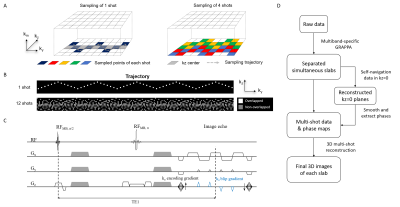 |
Computer Number: 29
2759. Self-navigated
simultaneous multi-slab 3D DWI
Y. Xiao, Z. Li, W. Zhong, J. Zhang, Y. Jiang, X. Shao, Y.
Lian, F. Liu, W. Wu, K. Miller, H. Guo
Tsinghua University, Beijing, China
Impact: Our method eliminated the navigator with
optimized sampling and multiband specific GRAPPA
reconstruction, which showed the potential to achieve
optimal signal-to-noise ratio efficiency with approximately
30% shorter scanning time. This approach enables broader
applications of high-resolution SMSlab DWI in neuroscience.
|
|
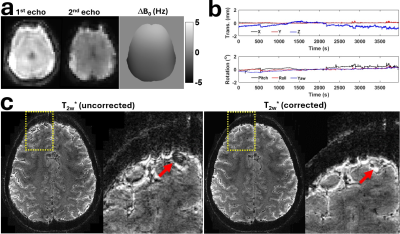 |
Computer Number: 30
2760. Whole
Brain Magnetic Susceptibility Mapping at 0.3 mm Isotropic
Mesoscale Resolution with Motion and B0-shift Corrections at 7T
Y. Meng, I. Budeir, D. Qiu
Emory University, Atlanta, United States
Impact: High-quality mesoscale whole brain QSM with the
developed method provides a reliable tool for assessing
neurodegenerations.
|
|
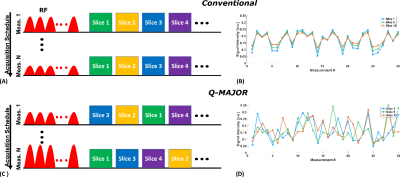 |
Computer Number: 31
2761. Quantitative
Multi-slice And Jointly Optimized Rapid CEST (Q-MAJOR-CEST) for
In Vivo Whole-Brain Imaging
O. Cohen, R. Young, R. Otazo
Memorial Sloan Kettering, New York, United States
Impact: The proposed Q-MAJOR-CEST technique enables
accurate and reproducible whole-brain quantitative CEST
imaging in clinically relevant scan times that can be used
for improved diagnosis and treatment response monitoring of
brain tumors.
|
|
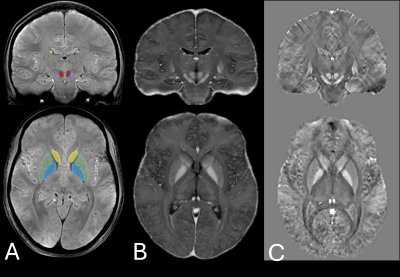 |
Computer Number: 32
2762. In
vivo R2* and QSM on the 11.7T whole-body Iseult MRI System using
Universal Pulses Transmission and Virtual Coil Reconstruction
M. Santin, M. Didier, F. Mauconduit, A. Massire, C. Le Ster,
R. Valabregue, V. Gras, M. Luong, A. Amadon, M. Bottlaender,
N. Boulant, A. Vignaud
Paris Brain Institute - ICM, Paris, France
Impact: This study paves the way for the use of QSM and
R2* at ultra-high field (11.7T)
|
The International Society for Magnetic Resonance in Medicine is accredited by the Accreditation Council for Continuing Medical Education to provide continuing medical education for physicians.